The merciless sun beat down upon the unforgiving, rocky scape as the caravan wound its way across the desert. The wizened man in the entourage puckered his parched lips to take a sip of water, and checked his bag to make sure his work-tools were intact. His fingers were delicate, and his hands strengthened by years of chiselling stone. He, along with a few of his fellow craftsmen were being escorted by a contingent of Mughal warriors to the Indian subcontinent from their native land in Persia, in search of new markets to ply their trade and practice their art. The journey was long and arduous, but finally having crossed arid deserts and towering mountains, they arrived at the gates of Delhi, the bustling centre of commerce and the erstwhile capital of the Lodhi dynasty.
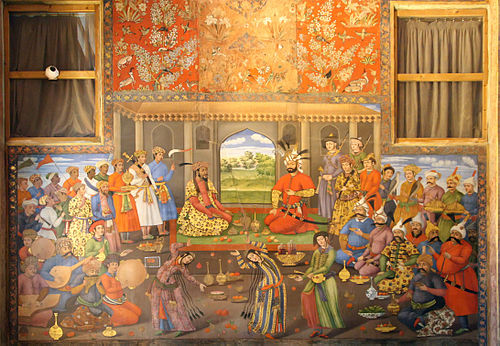
The new emperors of Delhi, the Mughals, had a strong affinity for Persian arts, and this led to the introduction of a new aesthetic in the melting pot that is Indian art and culture, one inspired by Persian motifs and concepts.
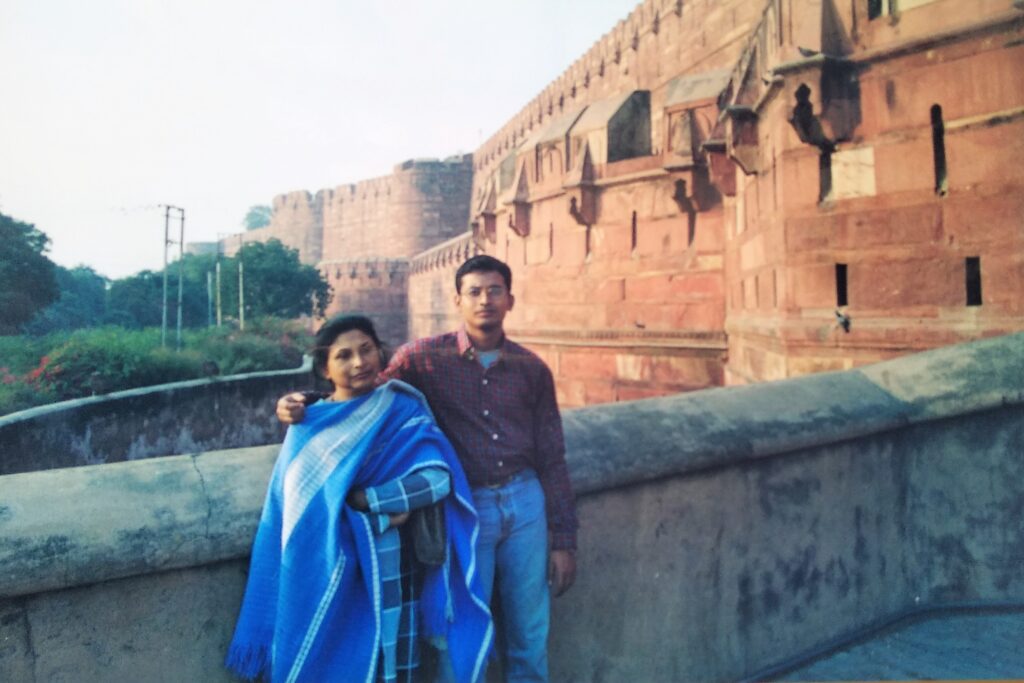
My mother and I, in front of the beautiful Agra Fort 
My parents in front of the towering Bulund Darwaza
Beautiful gardens, majestic forts and soulful mausoleums were designed, as the artisans from faraway lands settled into their new homes and worked on new commissions for their masters. A thriving waterfront garden city quickly developed on the banks of the river Yamuna, as Agra became the lodestar for artists, poets, traders and saints alike. The Agra Fort was rebuilt with red sandstone under Emperor Akbar to rise like a Phoenix from ashes, embodying the best of Mughal Islamic architectural styles, replete with towering gates, geometric tanks, intricate glass mosaics and embellished walls.
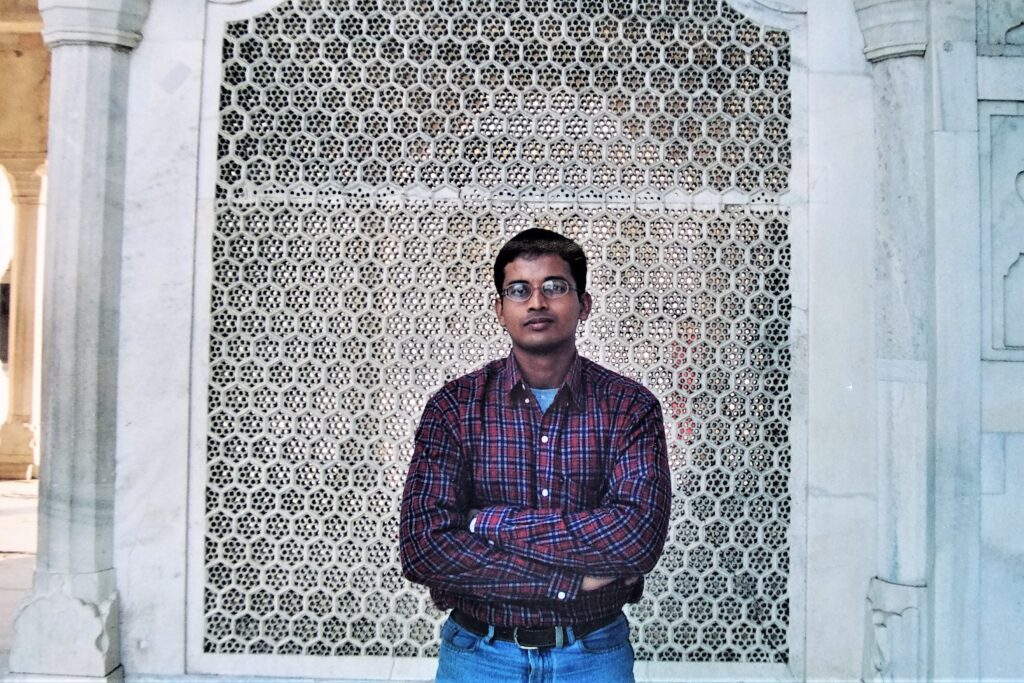
The Taj Mahal was built with the finest white marbles, with inlaid semi-precious stones and intricate lattice carvings done by over 20,000 artisans. The elaborate incised paintings, the jali marble lattice work, the beautiful calligraphy and stunning architecture of minarets and domes, led the Taj Mahal to be designated as a UNESCO World Heritage Site and one of the modern 7-wonders of the world. It attracts over 8 million visitors a year, and even today stands as a token of eternal love.
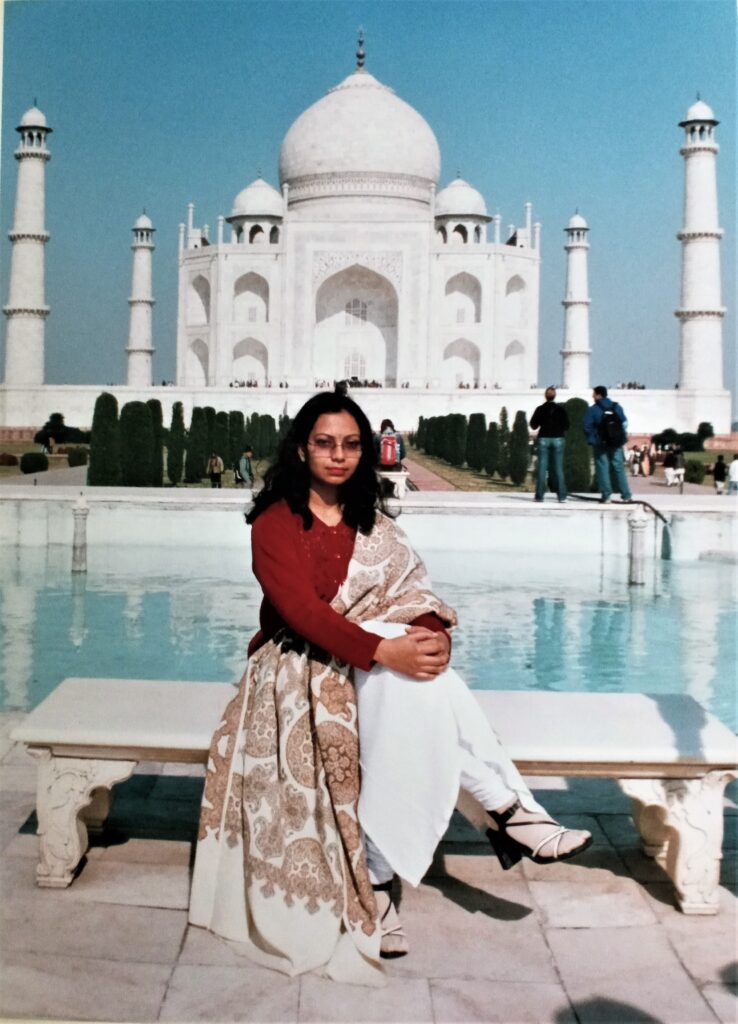
The intricate geometric (usually hexagonal) lattice work (called jali lattice) on marble and other stones became a much sought-after design during the years that followed. However, once the construction of palaces and noble houses dwindled down, these artists lost their employ and had to fall back on other means of livelihood to survive. A few craftsmen managed to preserve the art of lattice stone-carving by passing this knowledge down the generations. The art itself evolved, and their modern-day descendants started to use softer stones to create smaller, delicate pieces that could adorn the shelves of their patrons.
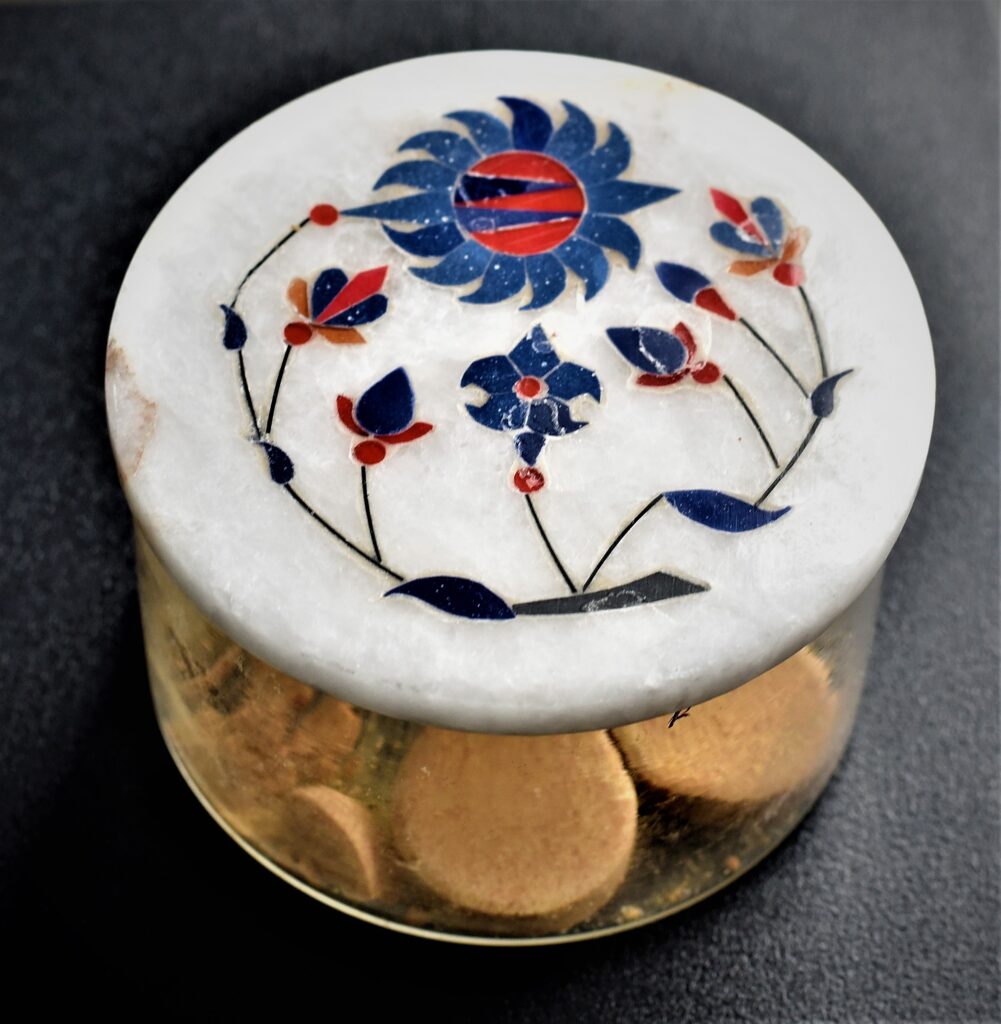
Jar with Marble-inlay lid 
Sandstone jewellery box with lattice work
Al-Maun [Arabic for Small Acts of Kindness] brings together descendants of those remarkable Persian artists and sculptors who produced the stunning artwork of architectural marvels like the Taj Mahal, Fatehpur Sikri and the Lal Quila (Red Fort). Started by Imtiaz Ali, the young enterprising artist whose family has been pursuing this craft for over four centuries, Al Maun makes an array of home décor items like lamps, coasters, planters and decorative boxes made in sandstone and marble. Their products are elegant, practical and painstakingly hand-crafted, following the age-old traditions of 16th century stone carvings. Not only does this allow buyers to enjoy the art patronised by the Mughal royals, but also ensures that the artists earn a fair remuneration for their work and are able preserve this beautiful art-form.
Art form- Stone Carving
Artist- Al Maun by Imtiaz Ali
Contact- +91 84397 63882
Language- Hindi, English
Social media-
https://www.instagram.com/almaunindia/
https://m.facebook.com/almaunofficial/

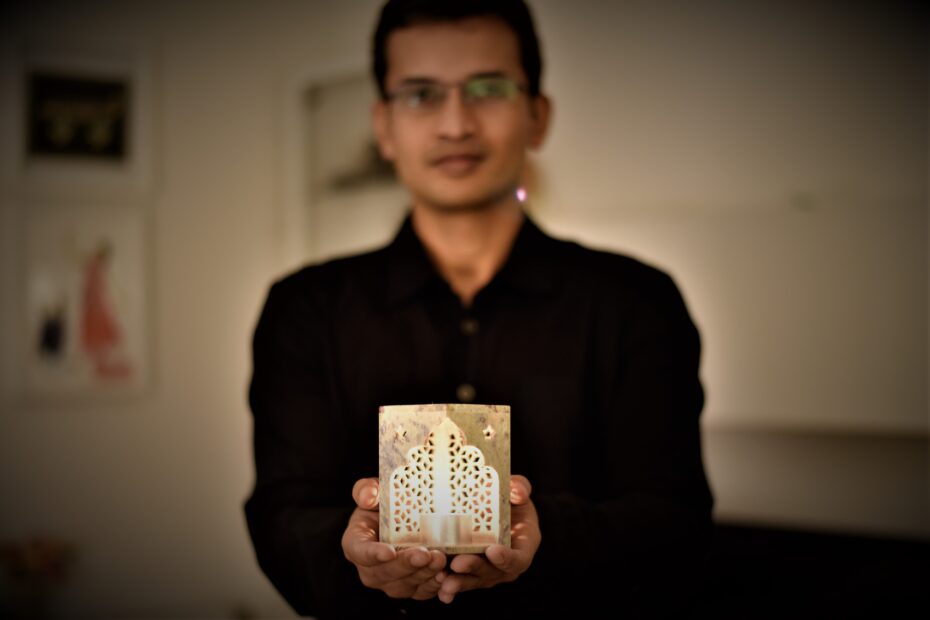


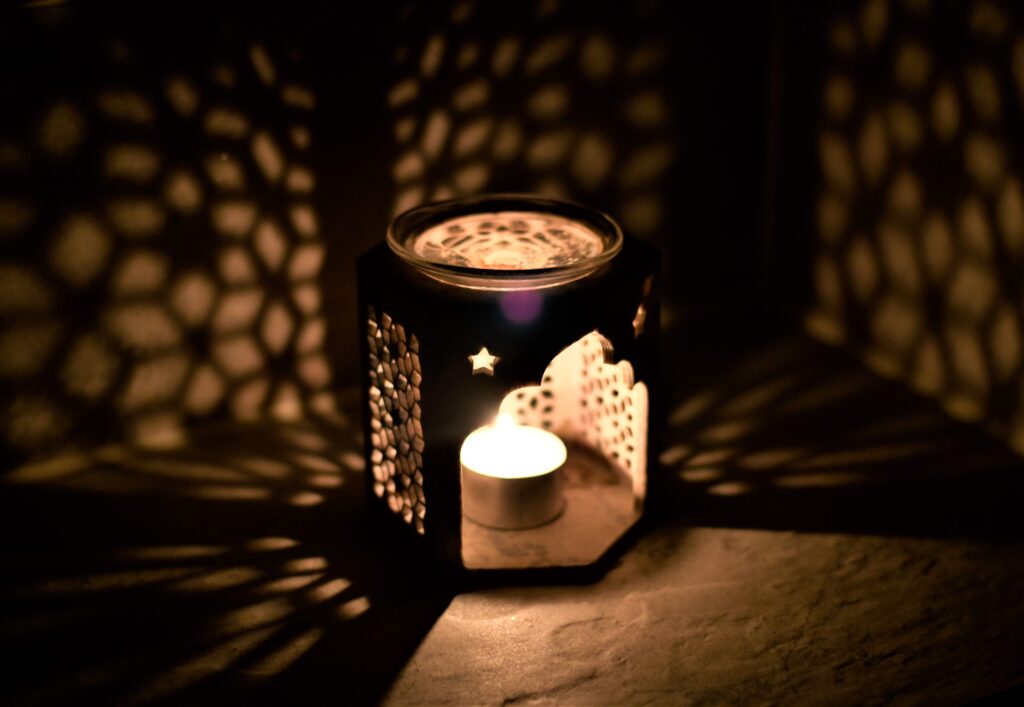
Beautiful work by the artist.
Yes indeed
You are doing amazing work. God bless you.
Thank you so much